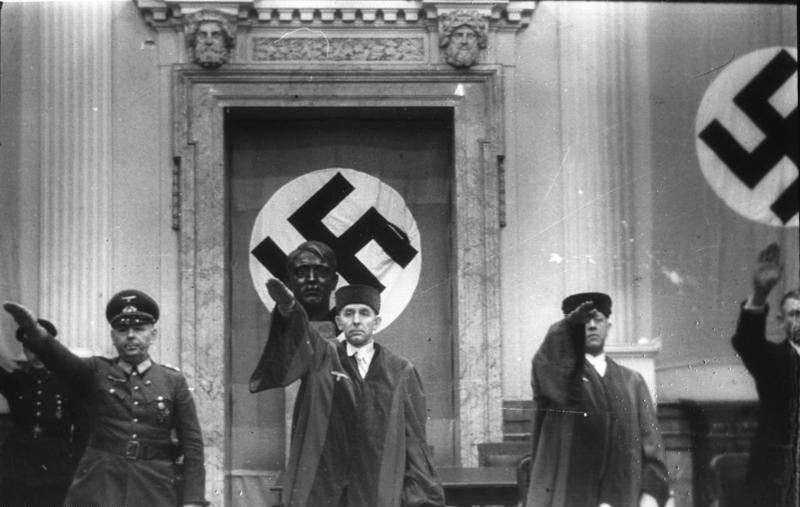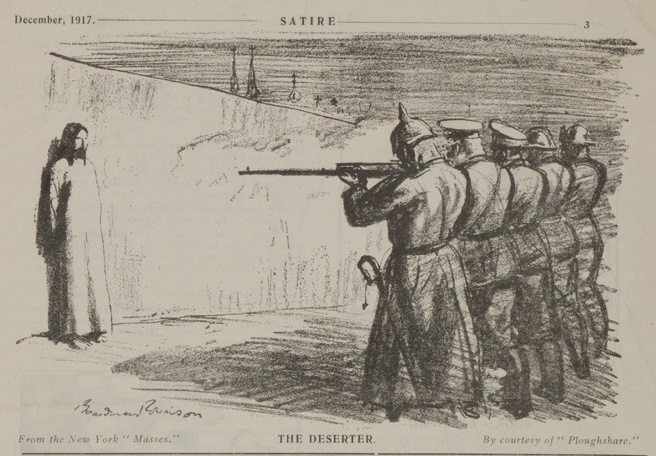|
Brandenburg-Görden Prison
Brandenburg-Görden Prison is located on Anton-Saefkow-Allee in the Görden quarter of Brandenburg an der Havel. Erected between 1927 and 1935, it was built to be the most secure and modern prison in Europe. Both criminal and political prisoners were sent there, as well as people imprisoned for preventive detention or for interrogation and prisoners of war. Built with a capacity of 1,800, it sometimes held over 4,000 during the Nazi era. After the war, East Germany used the prison to incarcerate at least 170,000 people. Prisoners were used for labor, with them making things such as tractors, kitchen furniture, uniforms and radiation suits, electric motors, shoes, and cars. History A first Zuchthaus in Brandenburg was established on Neuendorfer Straße in 1820. The old Brandenburg Prison was closed in 1931 because of its disastrous hygienic conditions, but later housed a Nazi concentration camp from August 1933 till February 1934. It later became the site of the Brandenburg Euthan ... [...More Info...] [...Related Items...] OR: [Wikipedia] [Google] [Baidu] |
Bundesarchiv Bild 102-11695, Brandenburg, Hauptgebäude Des Zuchthauses
The German Federal Archives or Bundesarchiv (BArch) (german: Bundesarchiv) are the National Archives of Germany. They were established at the current location in Koblenz in 1952. They are subordinated to the Federal Commissioner for Culture and the Media (Claudia Roth since 2021) under the German Chancellery, and before 1998, to the Federal Ministry of the Interior (Germany), Federal Ministry of the Interior. On 6 December 2008, the Archives donated 100,000 photos to the public, by making them accessible via Wikimedia Commons. History The federal archive for institutions and authorities in Germany, the first precursor to the present-day Federal Archives, was established in Potsdam, Brandenburg in 1919, a later date than in other European countries. This national archive documented German government dating from the founding of the North German Confederation in 1867. It also included material from the older German Confederation and the Imperial Chamber Court. The oldest documents i ... [...More Info...] [...Related Items...] OR: [Wikipedia] [Google] [Baidu] |
Sondergericht
A ''Sondergericht'' (plural: ''Sondergerichte'') was a German "special court". After taking power in 1933, the Nazis quickly moved to remove internal opposition to the Nazi regime in Germany. The legal system became one of many tools for this aim and the Nazis gradually supplanted the normal justice system with political courts with wide-ranging powers. The function of the special courts was to intimidate the German public, but as they expanded their scope and took over roles previously done by ordinary courts such as '' Amtsgerichte'' this function became diluted. Function in Germany Special courts had existed in Germany as far back as the nineteenth century. They had generally been set up temporarily in response to some major but localised civil disturbance and then quickly dissolved once they had served their purpose. A more permanent national network of Special Courts came into being during 1933, soon after the passage of the Reichstag Fire Decree, which all but eliminat ... [...More Info...] [...Related Items...] OR: [Wikipedia] [Google] [Baidu] |
Russian Liberation Army
The Russian Liberation Army; russian: Русская освободительная армия, ', abbreviated as (), also known as the Vlasov army after its commander Andrey Vlasov, was a collaborationist formation, primarily composed of Russians, that fought under German command during World War II. Vlasov, a Soviet general, agreed to collaborate with Nazi Germany after having been captured on the Eastern Front. The soldiers under his command were mostly former Soviet prisoners of war but also included White Russian émigrés, some of whom were veterans of the anti-communist White Army from the Russian Civil War (1917–23). On 14 November 1944, it was officially renamed the Armed Forces of the Committee for the Liberation of the Peoples of Russia, with the KONR being formed as a political body to which the army pledged loyalty. On 28 January 1945, it was officially declared that the Russian divisions no longer form part of the German Army, but would directly be under th ... [...More Info...] [...Related Items...] OR: [Wikipedia] [Google] [Baidu] |
Soviet Army
uk, Радянська армія , image = File:Communist star with golden border and red rims.svg , alt = , caption = Emblem of the Soviet Army , start_date = 25 February 1946 , country = (1946–1991)' (1991–1992) , branch = , type = Army , role = Ground warfare, Land warfare , size = 3,668,075 active (1991) 4,129,506 reserve (1991) , command_structure = , garrison = , garrison_label = , nickname = "Red Army" , patron = , motto = ''За нашу Советскую Родину!(Za nashu Sovetskuyu Rodinu!)''"For our Soviet Motherland!" , colors = Red and yellow , colors_label = , march ... [...More Info...] [...Related Items...] OR: [Wikipedia] [Google] [Baidu] |
Battle Of Berlin
The Battle of Berlin, designated as the Berlin Strategic Offensive Operation by the Soviet Union, and also known as the Fall of Berlin, was one of the last major offensives of the European theatre of World War II. After the Vistula–Oder Offensive of January–February 1945, the Red Army had temporarily halted on a line east of Berlin. On 9 March, Germany established its defence plan for the city with Operation Clausewitz. The first defensive preparations at the outskirts of Berlin were made on 20 March, under the newly appointed commander of Army Group Vistula, General Gotthard Heinrici. When the Soviet offensive resumed on 16 April, two Soviet fronts (army groups) attacked Berlin from the east and south, while a third overran German forces positioned north of Berlin. Before the main battle in Berlin commenced, the Red Army encircled the city after successful battles of the Seelow Heights and Halbe. On 20 April 1945, Hitler's birthday, the 1st Belorussian Front ... [...More Info...] [...Related Items...] OR: [Wikipedia] [Google] [Baidu] |
Red Army
The Workers' and Peasants' Red Army (Russian: Рабо́че-крестья́нская Кра́сная армия),) often shortened to the Red Army, was the army and air force of the Russian Soviet Federative Socialist Republic and, after 1922, the Union of Soviet Socialist Republics. The army was established in January 1918. The Bolsheviks raised an army to oppose the military confederations (especially the various groups collectively known as the White Army) of their adversaries during the Russian Civil War. Starting in February 1946, the Red Army, along with the Soviet Navy, embodied the main component of the Soviet Armed Forces; taking the official name of "Soviet Army", until its dissolution in 1991. The Red Army provided the largest land force in the Allied victory in the European theatre of World War II, and its invasion of Manchuria assisted the unconditional surrender of Imperial Japan. During operations on the Eastern Front, it accounted for 75–80% of casual ... [...More Info...] [...Related Items...] OR: [Wikipedia] [Google] [Baidu] |
Nazi
Nazism ( ; german: Nazismus), the common name in English for National Socialism (german: Nationalsozialismus, ), is the far-right totalitarian political ideology and practices associated with Adolf Hitler and the Nazi Party (NSDAP) in Nazi Germany. During Hitler's rise to power in 1930s Europe, it was frequently referred to as Hitlerism (german: Hitlerfaschismus). The later related term " neo-Nazism" is applied to other far-right groups with similar ideas which formed after the Second World War. Nazism is a form of fascism, with disdain for liberal democracy and the parliamentary system. It incorporates a dictatorship, fervent antisemitism, anti-communism, scientific racism, and the use of eugenics into its creed. Its extreme nationalism originated in pan-Germanism and the ethno-nationalist '' Völkisch'' movement which had been a prominent aspect of German nationalism since the late 19th century, and it was strongly influenced by the paramilitary groups that ... [...More Info...] [...Related Items...] OR: [Wikipedia] [Google] [Baidu] |
Conscientious Objector
A conscientious objector (often shortened to conchie) is an "individual who has claimed the right to refuse to perform military service" on the grounds of freedom of thought, conscience, or religion. The term has also been extended to objecting to working for the military–industrial complex due to a crisis of conscience. In some countries, conscientious objectors are assigned to an alternative civilian service as a substitute for conscription or military service. A number of organizations around the world celebrate the principle on May 15 as International Conscientious Objection Day. On March 8, 1995, the United Nations Commission on Human Rights resolution 1995/83 stated that "persons performing military service should not be excluded from the right to have conscientious objections to military service". This was re-affirmed on April 22, 1998, when resolution 1998/77 recognized that "persons lreadyperforming military service may ''develop'' conscientious objections". H ... [...More Info...] [...Related Items...] OR: [Wikipedia] [Google] [Baidu] |
Bible Student Movement
The Bible Student movement is a Millennialist Restorationist Christian movement. It emerged from the teachings and ministry of Charles Taze Russell (1852–1916), also known as Pastor Russell, and his founding of the Zion's Watch Tower Tract Society in 1881. Members of the movement have variously referred to themselves as ''Bible Students'', ''International Bible Students'', ''Associated Bible Students'', or ''Independent Bible Students''. A number of schisms developed within the congregations of Bible Students associated with the Watch Tower Society between 1909 and 1932. The most significant split began in 1917 following the election of Joseph Franklin Rutherford as president of the Watch Tower Society two months after Russell's death. The schism began with Rutherford's controversial replacement of four of the Society's board of directors and publication of ''The Finished Mystery'' in July 1917. Thousands of members left congregations of Bible Students associated with the Wa ... [...More Info...] [...Related Items...] OR: [Wikipedia] [Google] [Baidu] |
20 July Plot
On 20 July 1944, Claus von Stauffenberg and other conspirators attempted to assassinate Adolf Hitler, Führer of Nazi Germany, inside his Wolf's Lair field headquarters near Rastenburg, East Prussia, now Kętrzyn, in present-day Poland. The name "Operation Valkyrie"—originally referring to part of the conspiracy—has become associated with the entire event. The apparent aim of the assassination attempt was to wrest political control of Germany and its armed forces from the Nazi Party (including the SS) and to make peace with the Western Allies of World War II, Allies as soon as possible. The details of the conspirators' peace initiatives remain unknown, but they would have included unrealistic demands for the confirmation of Germany's extensive annexations of European territory. The plot was the culmination of efforts by several groups in the German resistance to Nazism, German resistance to overthrow the Nazi German government. The failure of the assassination attempt an ... [...More Info...] [...Related Items...] OR: [Wikipedia] [Google] [Baidu] |
Sinti
The Sinti (also ''Sinta'' or ''Sinte''; masc. sing. ''Sinto''; fem. sing. ''Sintesa'') are a subgroup of Romani people mostly found in Germany and Central Europe that number around 200,000 people. They were traditionally itinerant, but today only a small percentage of Sinti remain unsettled. In earlier times, they frequently lived on the outskirts of communities. The Sinti of Central Europe (mostly Germany) are closely related to the group known as Manouche in France. They speak the Sinti-Manouche variety of Romani, which exhibits strong German influence. The origin of the Sinti people, as with the broader Romani people, lies generally in the Indian subcontinent; while people from the western Indian subcontinent's region of Sindh were mentioned in 1100 by the Arab chronicler Meidani, it is unclear if the Sindhi people are the ancestors of modern-day Sinti, though what is clear is that the Sinti, as with other Romani people, generally originate in the northern Indian subcontine ... [...More Info...] [...Related Items...] OR: [Wikipedia] [Google] [Baidu] |







